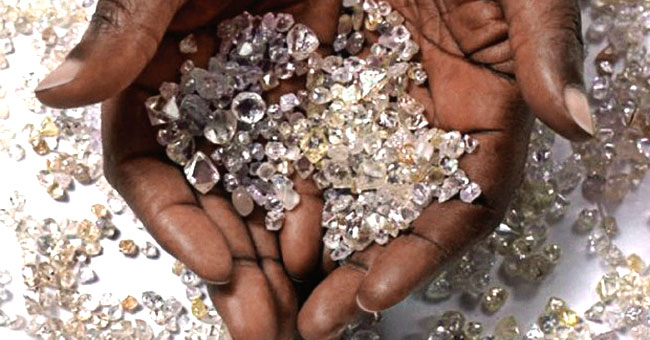
LONDON: Botswana Diamonds has concluded the processing of two bulk samples taken from the Marsfontein diamond development project in the Limpopo Province of South Africa.
The samples comprised 58-tons of fresh high-interest kimberlite and 62-tons of kimberlitic material from one of the residual stockpiles, known as ‘Dump E’.
James Campbell, Managing Director commented “This bulk sampling campaign, which was carried out with the company’s royalty mining contractor Eurafrican Diamond Corporation, had two objectives.
The first was to test the grade of the fresh kimberlite and the second was to confirm the grades of one of the mine dumps. Both were achieved, and proof of the fresh kimberlite grade paves the way for further exploration work on Marsfontein to target potential blows.
The kimberlite grade is aligned with those achieved at Klipspringer mine and Thorny River, which are both nearby, indicating the considerable extent of the kimberlite dyke system.
Options will be investigated on exploitation of the dumps once the nationwide lock down in South Africa is lifted and a sense of normality returns to diamond markets, post the global Covid-19 pandemic crisis.”
The fresh kimberlite was identified as originating from the M8 dyke system, which extends to the Klipspringer diamond mine c.11 km to the west and the company’s Thorny River project to c.5 km the east. The Dump E material was predominantly a mix of M8 kimberlite and dolerite.
Both samples were treated at Eurafrican Diamond Corporation’s processing facility. They were subjected to primary and secondary crushing, pan plant concentration, grease and x-ray recovery and jigging with a nominal bottom cut-off of +1.7mm. These tailings have been retained for future analyses, as required.
The grade modelling was undertaken by Interlaced Consulting. It assumed a conventional kimberlite processing plant, including a re-crush circuit (to recover more finer diamonds).
Modelled results determined are in line with previous estimates and diamond recoveries from the nearby Klipspringer diamond mine.
Work will re-commence at Marsfontein and Thorny River as-soon-as Covid-19 restrictions are lifted to enable travel to the work areas.
Diamond grades are always stated along with a Bottom Cut-Off Size (‘BCOS’). Diamond sizes follow a logarithmic distribution with a peak in the finer sizes and a tail towards the coarser sizes. It is a commercial decision selecting the bottom cut-off size and typically for kimberlite processing plants this is +1.0 or +1.5mm.
‘CPHT’ refers to Carats Per Hundred Tons and ‘CTS’ refers to carats. Diamonds are weighed in carats. A carat is 0.2 grams and the name comes from the fruit of the carob seed, a seed commonly found in the Kimberley area of South Africa, one of the most prolific historical diamond producing areas.
This release has been approved by James Campbell, Managing Director of Botswana Diamonds plc, a qualified geologist (Pr.Sci.Nat), a Fellow of the Southern African Institute of Mining and Metallurgy, a Fellow of the Institute of Materials, Metals and Mining (UK) and with over 34-years’ experience in the diamond sector.